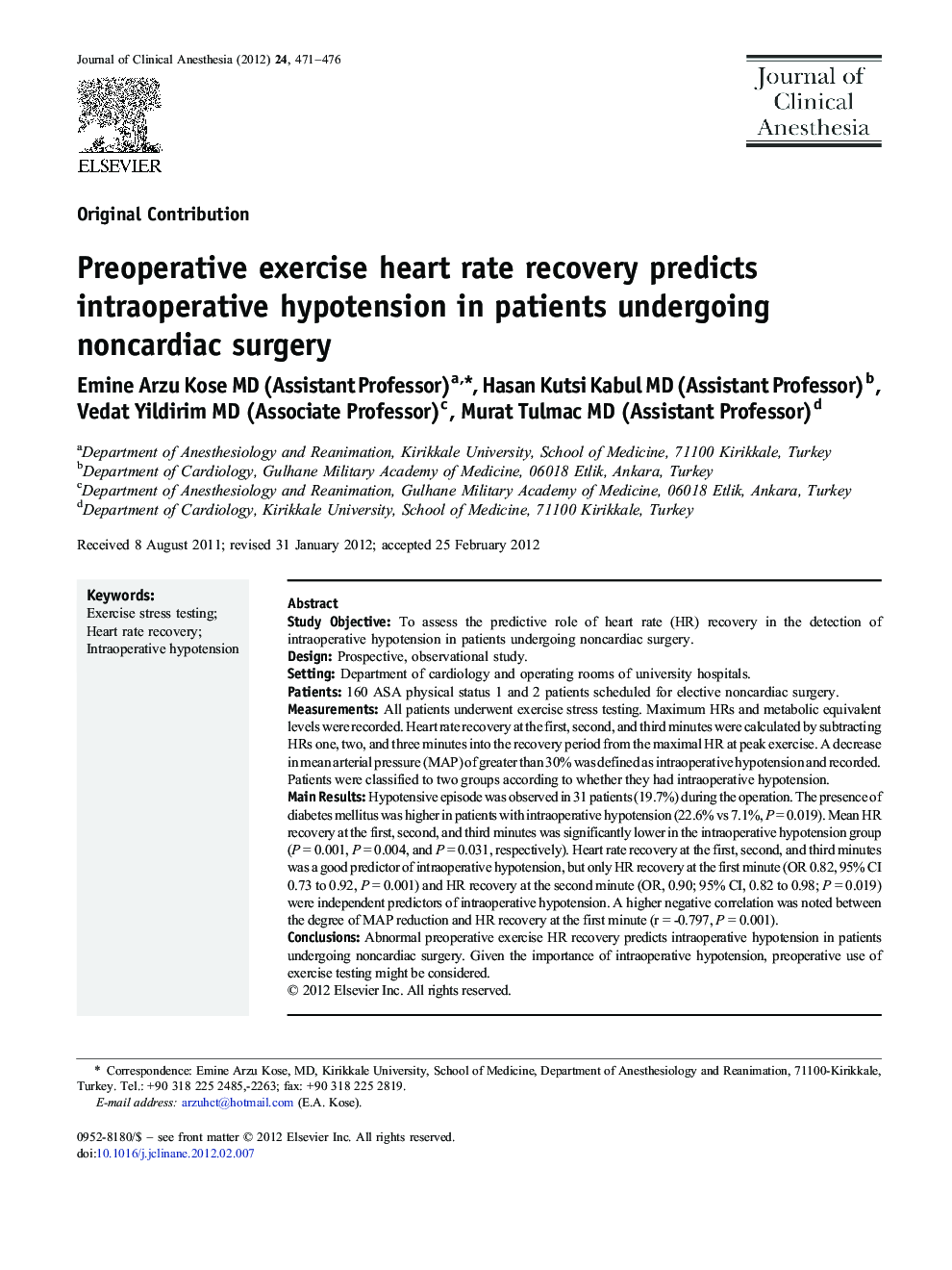| Article ID | Journal | Published Year | Pages | File Type |
|---|---|---|---|---|
| 2762773 | Journal of Clinical Anesthesia | 2012 | 6 Pages |
Study ObjectiveTo assess the predictive role of heart rate (HR) recovery in the detection of intraoperative hypotension in patients undergoing noncardiac surgery.DesignProspective, observational study.SettingDepartment of cardiology and operating rooms of university hospitals.Patients160 ASA physical status 1 and 2 patients scheduled for elective noncardiac surgery.MeasurementsAll patients underwent exercise stress testing. Maximum HRs and metabolic equivalent levels were recorded. Heart rate recovery at the first, second, and third minutes were calculated by subtracting HRs one, two, and three minutes into the recovery period from the maximal HR at peak exercise. A decrease in mean arterial pressure (MAP) of greater than 30% was defined as intraoperative hypotension and recorded. Patients were classified to two groups according to whether they had intraoperative hypotension.Main ResultsHypotensive episode was observed in 31 patients (19.7%) during the operation. The presence of diabetes mellitus was higher in patients with intraoperative hypotension (22.6% vs 7.1%, P = 0.019). Mean HR recovery at the first, second, and third minutes was significantly lower in the intraoperative hypotension group (P = 0.001, P = 0.004, and P = 0.031, respectively). Heart rate recovery at the first, second, and third minutes was a good predictor of intraoperative hypotension, but only HR recovery at the first minute (OR 0.82, 95% CI 0.73 to 0.92, P = 0.001) and HR recovery at the second minute (OR, 0.90; 95% CI, 0.82 to 0.98; P = 0.019) were independent predictors of intraoperative hypotension. A higher negative correlation was noted between the degree of MAP reduction and HR recovery at the first minute (r = -0.797, P = 0.001).ConclusionsAbnormal preoperative exercise HR recovery predicts intraoperative hypotension in patients undergoing noncardiac surgery. Given the importance of intraoperative hypotension, preoperative use of exercise testing might be considered.
